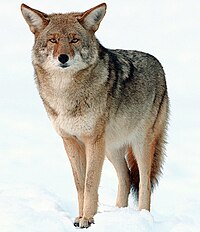
Autochthonous infection with Ehrlichia Canis and Hepatozoon Canis in dogs from Serbia
Sign Up to like & getrecommendations! Published in 2022 at "Veterinary Medicine and Science"
DOI: 10.1002/vms3.1061
Abstract: Abstract Background The epidemiological status concerning many canine tick‐borne diseases (TBDs) in Serbia is still insufficiently known. Objectives Our study aimed to investigate the presence of tick‐borne pathogens of the family Anaplasmataceae and Hepatozoon spp.,… read more here.
Keywords: hepatozoon canis; presence; infection; ehrlichia canis ... See more keywords

Seasonal differences in the intensity of acute phase response in dogs infected with Babesia canis
Sign Up to like & getrecommendations! Published in 2022 at "International Journal of Biometeorology"
DOI: 10.1007/s00484-021-02228-4
Abstract: The highest number of acute Babesia canis cases in dogs is recorded over the February–May (Feb–May) period, which also represents the optimal climate conditions for tick activity in Belgrade, Serbia. A possibility that the acute… read more here.
Keywords: acute phase; phase response; feb may; canis ... See more keywords

Detection of Anaplasmataceae agents and co-infection with other tick-borne protozoa in dogs and Rhipicephalus sanguineus sensu lato ticks
Sign Up to like & getrecommendations! Published in 2018 at "Experimental and Applied Acarology"
DOI: 10.1007/s10493-018-0280-9
Abstract: Anaplasmosis and ehrlichiosis are of serious health concern worldwide for animals and humans. In the present study, we report the occurrence of Anaplasma platys and Ehrlichia canis in dogs and Rhipicephalus sanguineus sensu lato (s.l.)… read more here.
Keywords: sanguineus sensu; canis; rhipicephalus sanguineus; sensu lato ... See more keywords

Prevalence of Anti-Toxocara canis Antibodies in Dogs Detected with Recombinant Cathepsin L-1 and TES-26 Antigens in Three States of India.
Sign Up to like & getrecommendations! Published in 2021 at "Acta parasitologica"
DOI: 10.1007/s11686-021-00464-7
Abstract: PURPOSE Toxocara canis is a common intestinal nematode parasite of dogs with recognized zoonotic potential in tropical countries. The purpose of this study was to determine the seroprevalence of anti-T. canis antibodies in two target… read more here.
Keywords: canis antibodies; owned dogs; canis; community owned ... See more keywords

Electrochemical microfluidic immunosensor based on TES-AuNPs@Fe3O4 and CMK-8 for IgG anti-Toxocara canis determination.
Sign Up to like & getrecommendations! Published in 2020 at "Analytica chimica acta"
DOI: 10.1016/j.aca.2019.10.040
Abstract: We report a microfluidic immunosensor for the electrochemical determination of IgG antibodies anti-Toxocara canis (IgG anti-T. canis). In order to improve the selectivity and sensitivity of the sensor, core-shell gold-ferric oxide nanoparticles (AuNPs@Fe3O4), and ordered mesoporous… read more here.
Keywords: igg; microscopy; determination; canis ... See more keywords

Molecular detection of tick-borne pathogens in wild red foxes (Vulpes vulpes) from Central Italy.
Sign Up to like & getrecommendations! Published in 2017 at "Acta tropica"
DOI: 10.1016/j.actatropica.2017.05.014
Abstract: Spleen samples from 153 red foxes, shot during regular hunting season in the province of Pisa (Central Italy), were examined to detect DNA of Anaplasma phagocytophilum, Ehrlichia canis, Coxiella burnetii, Francisella tularensis, Hepatozoon canis and… read more here.
Keywords: red foxes; molecular detection; canis; borne pathogens ... See more keywords

Le profil épidémio-clinique du kérion chez les enfants dans le centre tunisien
Sign Up to like & getrecommendations! Published in 2018 at "Annales De Dermatologie Et De Venereologie"
DOI: 10.1016/j.annder.2018.03.106
Abstract: Introduction Le kerion de Celse est une teigne inflammatoire et suppurative qui touche essentiellement l’enfant. Le but de notre etude est de preciser les caracteristiques epidemiocliniques et mycologiques des teignes inflammatoires dans notre region. Materiel… read more here.
Keywords: etait; avec; cas; kerion ... See more keywords

Tissue distribution and functional analysis of vitellogenin-6 of Toxocara canis.
Sign Up to like & getrecommendations! Published in 2017 at "Experimental parasitology"
DOI: 10.1016/j.exppara.2017.03.009
Abstract: Toxocara canis is an common intestinal nematode of canids and the principal causative agent of human toxocariasis. Vitellogenin (Vg), a source of amino acids and lipids in the eggs, are considered to play an important… read more here.
Keywords: vitellogenin; tissue distribution; canis; distribution ... See more keywords

Comparative transcriptomic analyses of male and female adult Toxocara canis.
Sign Up to like & getrecommendations! Published in 2017 at "Gene"
DOI: 10.1016/j.gene.2016.11.024
Abstract: Toxocariasis is an important, neglected zoonosis caused mainly by Toxocara canis. Although our knowledge of helminth molecular biology is improving through completed draft genome projects, there is limited detailed information on the molecular biology of… read more here.
Keywords: male female; female adult; canis; biology ... See more keywords

Next generation sequencing from Hepatozoon canis (Apicomplexa: Coccidia: Adeleorina): Complete apicoplast genome and multiple mitochondrion-associated sequences.
Sign Up to like & getrecommendations! Published in 2019 at "International journal for parasitology"
DOI: 10.1016/j.ijpara.2018.12.001
Abstract: Extrachromosomal genomes of the adeleorinid parasite Hepatozoon canis infecting an Israeli dog were investigated using next-generation and standard sequencing technologies. A complete apicoplast genome and several mitochondrion-associated sequences were generated. The apicoplast genome (31,869 bp) possessed… read more here.
Keywords: apicoplast genome; canis; generation; mitochondrion associated ... See more keywords

First isolation of Mycoplasma canis from human tissue samples after a dog bite
Sign Up to like & getrecommendations! Published in 2018 at "New Microbes and New Infections"
DOI: 10.1016/j.nmni.2018.05.003
Abstract: Mycoplasma canis is an opportunistic bacterial pathogen that may colonize dogs and cattle. In the present case, we report for the first time the isolation of M. canis from a wound tissue specimen of a… read more here.
Keywords: dog bite; tissue; canis; isolation ... See more keywords